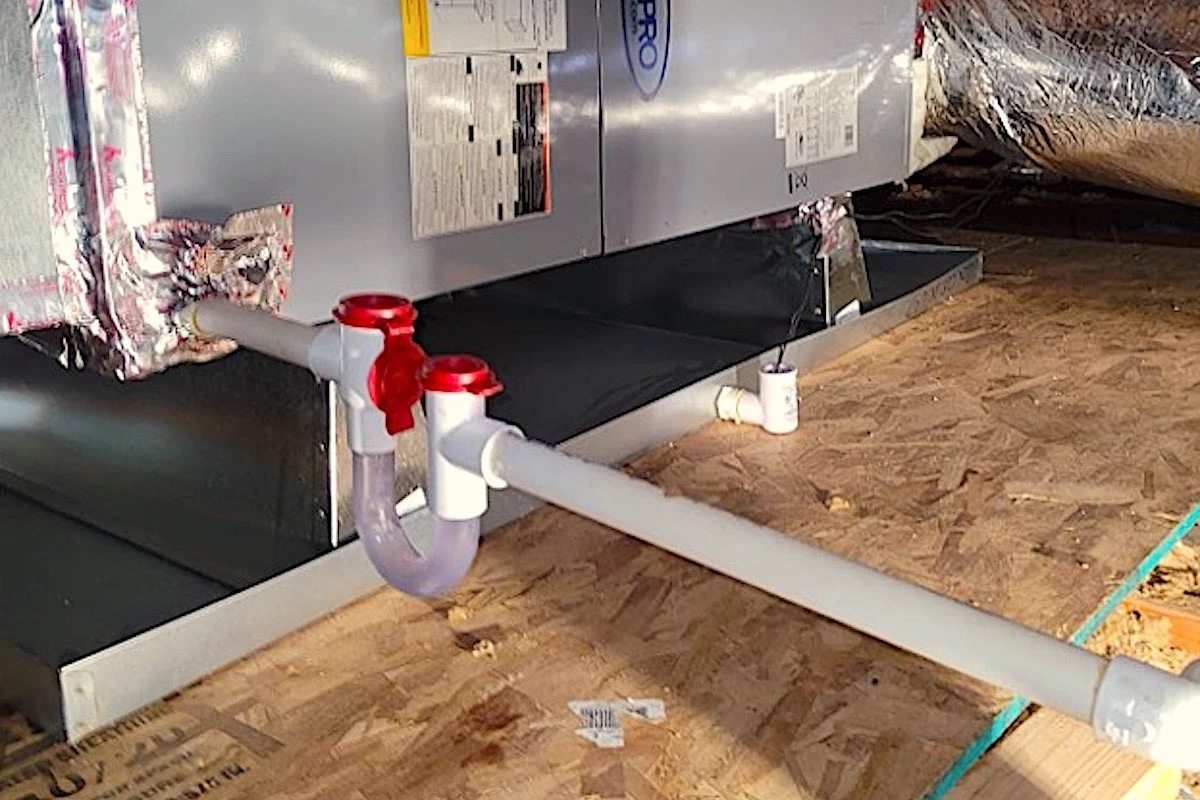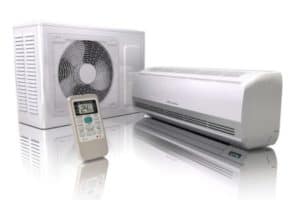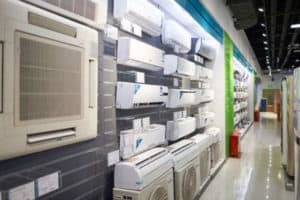What Does an EZ Trap Do?
If you have a central air conditioner or you’re installing a new one, you may have come across a device called EZ Trap. It is a type of air conditioner condensate trap. But, what does it actually do?
An EZ Trap can prevent air conditioner condensate water from overflowing. An EZ Trap with a float switch automatically shut down the air conditioner when a backflow of condensate water is detected.
Condensate water overflowing is a major concern, especially when you’re away from your house. An EZ Trap can prevent this from happening at a small cost.
What is an EZ Trap?
An EZ Trap is a type of air conditioner condensate trap trademarked by a manufacturing company known as RectorSeal. It is a U-shaped condensate trap commonly found in large-capacity air conditioners.
In general, there are two types of EZ Traps.
The first type is what I called the basic type of EZ Trap. It is available on Amazon at below $20. The exact product name is RectorSeal EZT-113. This type of EZ Trap works like a typical condensate trap but it comes with a brush for easy cleaning and uses a transparent pipe for you to see the inside of the drain pipe.
The second type of EZ Trap is the more appealing type which is the one with a float switch. This type of EZ Trap has an additional float switch that will automatically shut down your air conditioner in case of a drain pipe clog. It is also available on Amazon. The exact product name is RectorSeal EZT-210.
There are other similar kinds of EZ Trap sold on Amazon and other e-commerce stores. If you want the genuine and high-quality one, look for the one made by RectorSeal.
How Does an EZ Trap Works?
Like any condensate trap, an EZ Trap works by trapping a small amount of water inside the U-bend to stop the outside air from entering the air handler through the drain pipe. What this does is it allows the condensate water collected on the drain pan to discharge properly.
When an air conditioner operates, its cooling coil removes moisture by condensing the air. As the air condenses, water droplets known as condensate water form on the surface of the cooling coil. The condensate water is then drip onto a drain pan located under the cooling coil. The drain pan is connected to an external drain pipe so that the condensate water can be discharged outside.
Why Do Air Conditioners Need a Condensate Trap?
Large air handlers (3-5 tons of cooling capacity) need a condensate trap to discharge the condensate water because they create a strong negative pressure. This negative pressure is so strong that it sucks the outside air in through the drain pipe. Without a condensate trap, the condensate water will be held onto the drain pan and this will eventually lead to an overflow.
By trapping a small amount of water inside the U-bend of the condensate trap, the pressure inside the drain pipe is equalized and therefore, the condensate water can be discharged.
How Does an EZ Trap Prevent Overflow?
An EZ Trap with a float switch is wired to the thermostat of an air conditioner. When there is a clog in the drain pipe, the condensate water will backflow to the EZ Trap, the float switch will then trigger and cut power to the thermostat, shutting down the air conditioner and preventing more condensate water from being added onto the drain pan.
In addition, an EZ Trap also allows you to monitor the condition of the drain pipe. If you notice dirt is building up inside the U-bend, you can use the brush that comes with the EZ Trap to clean as a precaution to prevent the condensate water from overflowing while you’re away.
What are the Benefits of an EZ Trap?
Normally, the condensate trap in air conditioners is made of non-transparent PVC pipes. In my past projects, we install condensate traps using PVC elbow fittings. Due to the sheer quantity of air conditioners and applications, cleanable and transparent condensate traps such as EZ Traps are not used.
Now, with an EZ Trap, you can prevent the condensate water from overflowing at a small cost. Additionally, you can clean the U-bend section easily with the brush that comes with the EZ Trap while we usually blow it with pressurized nitrogen gas.
I find that an EZ Trap is a great preventive device for homeowners because it comes in one piece which is easy for non-professionals to install and maintain. Get the RectorSeal EZT-210 from Amazon.
How to Install an EZ Trap?
The installation of an EZ Trap is very easy. While you can refer to the installation manual that comes with the EZ Trap, the general procedure to install a condensate trap is as follows:
- Identify the installation location of the condensate trap. This is usually right beside the air handler.
- Connect a short length of drain pipe (and a pipe elbow if necessary) to the primary drain pan or the secondary drain pan of the air handler.
- Make a U-bend with an EZ Trap or 4 pipe elbows to form a condensate trap. The level of the drain pipe before the U-bend must be higher than the level of the drain pipe after the U-bend to ensure there is enough gradient for the condensate water to discharge via gravity flow.
- Connect the rest of the drain pipe to the nearest discharge outlet.
Most of the time, you want to insulate the EZ Trap or condensate trap to prevent sweating. The installation instruction from RectorSeal states that:
“Insulation is required when trap is installed in unconditioned space where sweating can occur”.
from RectorSeal EZ Trap Installation Manual
Even in conditioned spaces, we often insulate condensate traps and drain pipes with 3/8″ to 1/2″ thick Superlon to prevent sweating.
Float Switch Wiring
If you have an EZ Trap with a float switch, you need to wire the float switch to the thermostat of your air conditioner. The wiring procedure is written on the installation manual that comes with the EZ Trap. However, the general procedure for wiring a float switch is as follows:
- Turn off the electrical power at the main panel before wiring the float switch.
- Maintain or install a fuse to protect the float switch and the thermostat.
- Disconnect the power wire to the thermostat.
- Connect the power wire to the float switch and then to the thermostat. The float switch essentially acts as the “middle man” who cuts off power to the thermostat when there is a backflow of condensate water.
- Lift the float switch to test its functionality.
Since the float switch cuts power to the thermostat which causes the air conditioner to stop operation, if your air conditioner doesn’t work this way, the wiring procedure needs to be re-evaluated. For example, some air conditioners can still operate when the thermostat goes off. Hence, cutting power to their thermostat won’t stop the condensate water from producing and overflowing.
How to Clean an EZ Trap?
It is easy to clean an EZ Trap. Open the service cap on the EZ Trap and clean the pipe using the brush that comes with the EZ Trap. If a clog happens somewhere along the drain pipe, you need to blow or pressurize the drain pipe to force it out. A professional HVAC technician may be required.
EZ Trap FAQs
- Do I Need an EZ Trap?
If you have a large air handler, you must have a condensate trap. As for an EZ Trap with a float switch, it is a good addition if you want to leave your HVAC system on while you’re away with peace of mind. - Is an EZ Trap Supposed to Have Water In It?
Yes, an EZ Trap is supposed to have water in its U-bend section. This is to equalize the pressure in the drain pipe in order for the condensate water to discharge via gravity flow. Without water, the EZ Trap doesn’t help the condensate water to discharge. - How to Reset the Float Switch on an EZ Trap?
The float switch can be reset by pressing the center button on the float switch. This will resume power to the thermostat and continue the operation of the air conditioner. Reset the float switch only when the drain pipe is cleared. Otherwise, overflow is imminent.
Lastly, consider my Mini Split (eBook) if you want to know how can you use Mini Split in your house. If you still have doubt or not feeling confident enough, feel free to consult me.
Consultation Service
Ask me for HVAC advice such as brand selection, best model, benefits, features, placement, duct size, grille size, how to design, design check, verification and other HVAC related queries.
If you have anything to add (or ask) about this topic, leave a comment down below!









